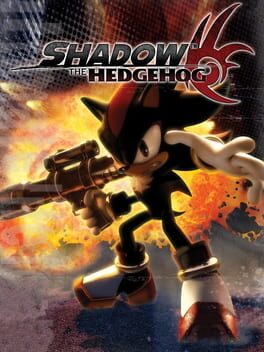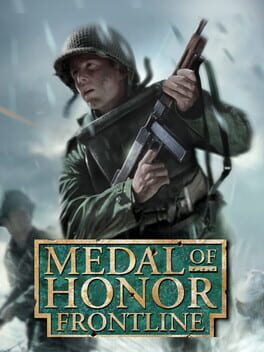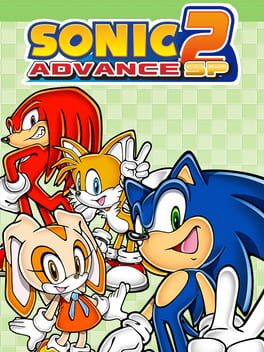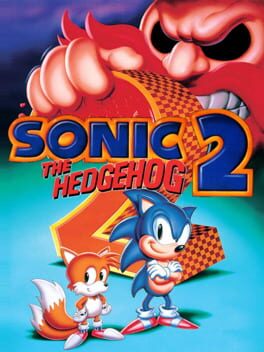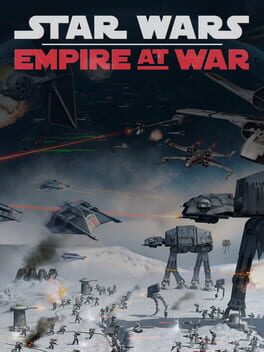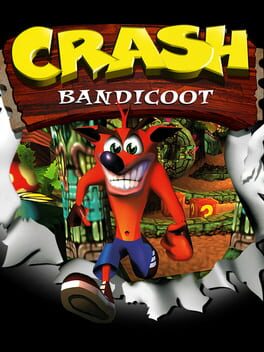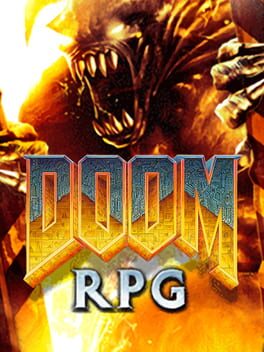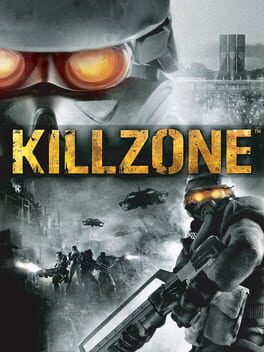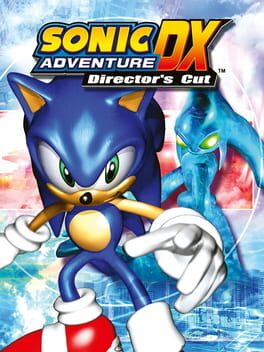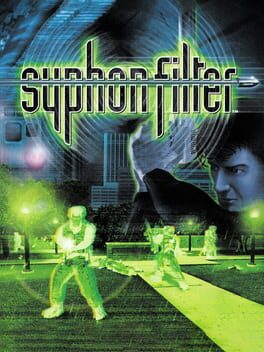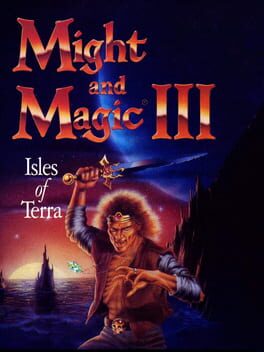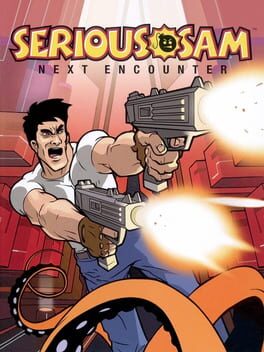Khvostik
2005
Reviewing this game is really difficult. But I think this title is one of the biggest misunderstandings in videogame history.
In essence, Shadow The Hedgehog is a pure evolution of Sonic Adventure 2, with its style, presentation, gameplay mechanics, and plot. This is not the kind of evolution sonic fans are used to, when everything stays the same, but more of adaptable evolution: where the previous game inspires a new one to expand mechanics, kind of like Ratchet and Clank or Jak and Daxter series evolved.
All that was in SA1-2 as more gimmicks or bonus content integrated there smoothly inside actual gameplay: Tails plane and Mecha levels become adapted as optionally ridable vehicles of many types, with expanded mechanics. Gamma/Mecha weapons and gunplay, bonus items like Magic Hands, etc. become adapted as core weapon mechanics of many types. "Missions" become organically integrated into the plot right inside levels, which become a key idea of game progression, instead of being some additional stuff you play from the map as a challenge.
Visuals, enemies, and world are also mostly taken from SA2, But unlike... let's say, subpar look of the original game locked on Dreamcast hardware, this game has the same environments like Ark, night cities, canyon ruins, and much more, but with much better color and weather effects, LODs, skyboxes and texturework.
Oh, and OST is fantastic, yes.
People mostly complain that this game feels "sloppy" or not as good as SA2, but I find it much more enjoyable and smooth to play than SA2. The camera works as intended, and now is fully free and follows the character correctly. Moves are executed almost perfectly. I never felt in this game that I would die because of the bad collision or a camera suck in the wall. An extended moveset and organically integrated mechanics give me a lot of choice in my playstyle, unlike original SA1-SA2 games which felt like a set of techdemos.
This game, together with Ratchet Deadlocked and Jak 3 represents for me the peak of 00s action-platformers, which later just fell out of popularity, which is sad.
In essence, Shadow The Hedgehog is a pure evolution of Sonic Adventure 2, with its style, presentation, gameplay mechanics, and plot. This is not the kind of evolution sonic fans are used to, when everything stays the same, but more of adaptable evolution: where the previous game inspires a new one to expand mechanics, kind of like Ratchet and Clank or Jak and Daxter series evolved.
All that was in SA1-2 as more gimmicks or bonus content integrated there smoothly inside actual gameplay: Tails plane and Mecha levels become adapted as optionally ridable vehicles of many types, with expanded mechanics. Gamma/Mecha weapons and gunplay, bonus items like Magic Hands, etc. become adapted as core weapon mechanics of many types. "Missions" become organically integrated into the plot right inside levels, which become a key idea of game progression, instead of being some additional stuff you play from the map as a challenge.
Visuals, enemies, and world are also mostly taken from SA2, But unlike... let's say, subpar look of the original game locked on Dreamcast hardware, this game has the same environments like Ark, night cities, canyon ruins, and much more, but with much better color and weather effects, LODs, skyboxes and texturework.
Oh, and OST is fantastic, yes.
People mostly complain that this game feels "sloppy" or not as good as SA2, but I find it much more enjoyable and smooth to play than SA2. The camera works as intended, and now is fully free and follows the character correctly. Moves are executed almost perfectly. I never felt in this game that I would die because of the bad collision or a camera suck in the wall. An extended moveset and organically integrated mechanics give me a lot of choice in my playstyle, unlike original SA1-SA2 games which felt like a set of techdemos.
This game, together with Ratchet Deadlocked and Jak 3 represents for me the peak of 00s action-platformers, which later just fell out of popularity, which is sad.
It is hard to really give this game an objective review and the reason is simple: it has not aged this well.
This game was made by a different company, than AA, thus it ignores its existence: by gameplay and general game design this game is a direct sequel to PS1 titles. However, said gameplay is more streamlined and simplified, in a way, making it mostly a regular corridor shooter with side objectives that often just "press on something you find along the way".
This is one of those "early PS2/GC" titles that feel more like PS1/N64 games with better resolution and assets, rather than true experience made conceptually for the new generation. Another "early" factor is that, at least on the GC version, stick controls don't feel very good. Movement and aim have this "wooden log" quality, typically more for PS1 games where they usually just mapped D-pad controls onto an analog pad.
I understand why it had such high scores and why it is loved by people who played it: the game still has neat scenes and scripted moments, came out still before Call of Duty and when MoH: AA was still very new and on PC only. So at the time of the release, it was the most interesting and advanced WWII FPS on consoles.
Still, playing it in 2024, after MoH: AA, after dozens of CoD titles, after Brothers in Arms, etc., makes you feel like you see before you only raw beta versions of things to come in the subgenre.
This game was made by a different company, than AA, thus it ignores its existence: by gameplay and general game design this game is a direct sequel to PS1 titles. However, said gameplay is more streamlined and simplified, in a way, making it mostly a regular corridor shooter with side objectives that often just "press on something you find along the way".
This is one of those "early PS2/GC" titles that feel more like PS1/N64 games with better resolution and assets, rather than true experience made conceptually for the new generation. Another "early" factor is that, at least on the GC version, stick controls don't feel very good. Movement and aim have this "wooden log" quality, typically more for PS1 games where they usually just mapped D-pad controls onto an analog pad.
I understand why it had such high scores and why it is loved by people who played it: the game still has neat scenes and scripted moments, came out still before Call of Duty and when MoH: AA was still very new and on PC only. So at the time of the release, it was the most interesting and advanced WWII FPS on consoles.
Still, playing it in 2024, after MoH: AA, after dozens of CoD titles, after Brothers in Arms, etc., makes you feel like you see before you only raw beta versions of things to come in the subgenre.
2023
Sonic Advance 2, despite being made on top of Sonic Advance 1 obviously, is a completely different game. Advance 1 was more an "enhanced early 00s modern take" on classic games, this one changed the flow and direction towards the speed and action, similar to what 3D more modern games did.
Speed-up rings, running forward, fewer enemies and exploration, even bosses are now fought "on the run".
Unfortunately, it was not a smooth transition - levels became more flat and frustrating. Death pits and lack of optional routes were a big downside of this game, but with SP hack it is a much smoother experience! So I will call "SP" more a definitive version of the game as it was meant to be - a hybrid of speed action runner with still, traditional sonic-style platforming exploration elements without much of the frustration.
In general, the game, has some visuals, animations, and cutscenes that are even more improved over already pleasant Advanced 1 visuals, but it is not a 100% upgrade, some graphics elements and level visuals I do prefer in Advance 1. Cutscenes after saving characters and overworld maps do give it a perception of a bit more "deep" game.
What I actually solidly liked over Advance 1 are the special stages. The Pseudo "mode 7" 3d perspective works nicely here - Advance 1 perspective was much more confusing.
Speed-up rings, running forward, fewer enemies and exploration, even bosses are now fought "on the run".
Unfortunately, it was not a smooth transition - levels became more flat and frustrating. Death pits and lack of optional routes were a big downside of this game, but with SP hack it is a much smoother experience! So I will call "SP" more a definitive version of the game as it was meant to be - a hybrid of speed action runner with still, traditional sonic-style platforming exploration elements without much of the frustration.
In general, the game, has some visuals, animations, and cutscenes that are even more improved over already pleasant Advanced 1 visuals, but it is not a 100% upgrade, some graphics elements and level visuals I do prefer in Advance 1. Cutscenes after saving characters and overworld maps do give it a perception of a bit more "deep" game.
What I actually solidly liked over Advance 1 are the special stages. The Pseudo "mode 7" 3d perspective works nicely here - Advance 1 perspective was much more confusing.
1992
Overall, this is the most beloved "classic" game by the community and is understandable: art, visual presentation, hardware utilization - everything was improved in 2nd game. It no longer looks like an early tech demo or a basic game but as a solid quality platformer by a professional dedicated studio.
Lots of music and levels from this game become memorable for people, and, sometimes perhaps overused in nostalgia baits. Well, at least the chemical plant is forever stuck in my head.
There are still a lot of raw moments toward the end, and special stages with tails are frustrating, they feel like making a slalom on ice while driving a bus with an attachment. I wouldn't say I liked late levels as much as early ones in general, and in this sense, in my opinion, the first one was a more universally solid game.
Oh, and most bosses are quite easy. Same as in the first game and usually they are nothing special, even tho more visually creative, than in the first game.
Is this a good game? Yes. Is it a bit overrated? Yea. Does it have some RAW moments? Sure. But well, check it out for yourself and decide.
Lots of music and levels from this game become memorable for people, and, sometimes perhaps overused in nostalgia baits. Well, at least the chemical plant is forever stuck in my head.
There are still a lot of raw moments toward the end, and special stages with tails are frustrating, they feel like making a slalom on ice while driving a bus with an attachment. I wouldn't say I liked late levels as much as early ones in general, and in this sense, in my opinion, the first one was a more universally solid game.
Oh, and most bosses are quite easy. Same as in the first game and usually they are nothing special, even tho more visually creative, than in the first game.
Is this a good game? Yes. Is it a bit overrated? Yea. Does it have some RAW moments? Sure. But well, check it out for yourself and decide.
Now this is the best Star Wars RTS of all time. This game did anything to build up and expand on awesome basic mechanics of the original EaW: new faction, new asymmetric balance system, both on conquest and combat maps, so many new units it is impossible to count.
This game allows everything you can imagine: corrupting planets, fighting with neutral pirates, and building Death Star II and Super Star Destroyer. And this is a great "Expanded Universe" rollercoaster - where else can you construct an Ark Hammer and produce all phases of dark troopers, or can you obtain TIE Phantoms and TIE Defenders as playable units? Or have a Hypori ground map with all those destroyed Acclamator cruisers as depicted in 2003 Clone Wars.
EaW FoC is not a fully proper Paradox-level game, and sadly, the vanilla release does not have all the features promised and had a good number of bugs (building Isalamiri cages.. sounds familiar?) this is the only reason I will not give it a 5-star rating. But there are mods, and projects like Thrawn's revenge enhance it to the full potential of being "Total War Star Wars on steroids".
This game allows everything you can imagine: corrupting planets, fighting with neutral pirates, and building Death Star II and Super Star Destroyer. And this is a great "Expanded Universe" rollercoaster - where else can you construct an Ark Hammer and produce all phases of dark troopers, or can you obtain TIE Phantoms and TIE Defenders as playable units? Or have a Hypori ground map with all those destroyed Acclamator cruisers as depicted in 2003 Clone Wars.
EaW FoC is not a fully proper Paradox-level game, and sadly, the vanilla release does not have all the features promised and had a good number of bugs (building Isalamiri cages.. sounds familiar?) this is the only reason I will not give it a 5-star rating. But there are mods, and projects like Thrawn's revenge enhance it to the full potential of being "Total War Star Wars on steroids".
1991
The first Sonic the Hedgehog game is much simpler in terms of graphics and presentation than I remembered it to be, because of later titles false memories. Visuals are simple and straightforward, especially in places like Marble Zone which have the look of a decent but budget Amiga/AtariST euro platformer.
This game yet doesn't have many of the special moves or features the series is famous for, but it is still pretty neat and solid to play a platformer game, if a bit janky in places.
While this game already kind of shows the limits of Genesis hardware (later titles will compensate it much better, by art and features and clever programming) it was a decent hardware showcase to compete against back then still relevant 8-bit systems.
This game yet doesn't have many of the special moves or features the series is famous for, but it is still pretty neat and solid to play a platformer game, if a bit janky in places.
While this game already kind of shows the limits of Genesis hardware (later titles will compensate it much better, by art and features and clever programming) it was a decent hardware showcase to compete against back then still relevant 8-bit systems.
It's the best Star Wars RTS ever to exist (if we count FoC just as an add-on). It plays smoothly, feels like the reflection of the Star Wars universe from the time, and is really fun to play.
Units and locations from the expanded universe, really pleasant for the time visuals, lots and lots of mechanics with different modes of conquest. The combination of Space battles, Ground battles, and their mutual attachment to each other with "landing" mechanics makes it for much more deep and interesting global conquest experiences than just classic CNC-like RTS with base building and campaign.
The main problem is that there is not enough content. Factions, mechanics, and units are fun and there is a lot of stuff, but it feels more like a frame for something even bigger and full, and this "bigger" will come...
Units and locations from the expanded universe, really pleasant for the time visuals, lots and lots of mechanics with different modes of conquest. The combination of Space battles, Ground battles, and their mutual attachment to each other with "landing" mechanics makes it for much more deep and interesting global conquest experiences than just classic CNC-like RTS with base building and campaign.
The main problem is that there is not enough content. Factions, mechanics, and units are fun and there is a lot of stuff, but it feels more like a frame for something even bigger and full, and this "bigger" will come...
1996
A pioneer in 3d platforming, this game is surprisingly nice for what it is, given the time it was released. Naughty Dog decided to go with a safer approach of more "forced" and "linear" platformers with lots of 2d sections and 3d sections like some older mode-7 style platformers from the past generation.
Still, I think that the 3d nature of it adds depth, and the low poly/art in it is truly pleasant to look at in my opinion. Naughty Dog and Insomniac back in the PS1-2 era were masters of low poly design and fluid animations. Character controls are nice and solid for the most part, it is not a slippery-sloppery hell of some other, especially early 3d platformers. Gameplay for the most part is simple in concepts, but often it is challenging enough to call this game a "heart attack simulator". The brutal difficulty is not something I miss from earlier arcade 2 platformers and run-n-gun games personally.
Still a nice title worth a try even today if you are enjoying this type of genre.
Still, I think that the 3d nature of it adds depth, and the low poly/art in it is truly pleasant to look at in my opinion. Naughty Dog and Insomniac back in the PS1-2 era were masters of low poly design and fluid animations. Character controls are nice and solid for the most part, it is not a slippery-sloppery hell of some other, especially early 3d platformers. Gameplay for the most part is simple in concepts, but often it is challenging enough to call this game a "heart attack simulator". The brutal difficulty is not something I miss from earlier arcade 2 platformers and run-n-gun games personally.
Still a nice title worth a try even today if you are enjoying this type of genre.
2005
A nice little dungeon crawler for J2ME phones and BREW. Very neat for a mobile game - quite long and entertaining. Maybe, a bit simplistic and linear but still enjoyable.
I liked silly moments and liked the overall design and feel, how classic doom-style monsters were mixed with a custom-designed texture set, which reminded me about System Shock and Doom 3.
May recommend if you like Doom, or the dungeon-crawler genre and want to waste some hours on a silly videogame.
I liked silly moments and liked the overall design and feel, how classic doom-style monsters were mixed with a custom-designed texture set, which reminded me about System Shock and Doom 3.
May recommend if you like Doom, or the dungeon-crawler genre and want to waste some hours on a silly videogame.
2004
A very interesting title in retrospective. A game that came out in 2004, that feels like a late 00s-early10s blockbuster from the PS3-Xbox360 era. This game was kind of a precursor to all Gears of War and Resistance games. It indeed feels like "AAA from the future" in terms of presentation, style, and visuals.
Graphics are nice for PlayStation 2, and for 2004 in general. It is completely different from the early titles on the same hardware. And I can understand why it was so hyped back in the day.
Sadly, because of the hardware limitation, hard cuts should've been made to fit it all and it shows. This game has all the sins of ps3-gen FPS titles, but much bigger. Small levels, big loading times, slow character movement, 2-3 types of enemies on the whole game, re-use of sections of the levels.
More than that, the game starts with spectacle, but then kind of half gives up and turns into a regular average corridor shooter with spongy enemies you need to pass. And bosses, if I can even call them bosses, are no different.
Still, it is not entirely boring, it tries hard to change the environment and do the plot and cutscenes, but be warned that it might get very tiring in the 2nd half.
Graphics are nice for PlayStation 2, and for 2004 in general. It is completely different from the early titles on the same hardware. And I can understand why it was so hyped back in the day.
Sadly, because of the hardware limitation, hard cuts should've been made to fit it all and it shows. This game has all the sins of ps3-gen FPS titles, but much bigger. Small levels, big loading times, slow character movement, 2-3 types of enemies on the whole game, re-use of sections of the levels.
More than that, the game starts with spectacle, but then kind of half gives up and turns into a regular average corridor shooter with spongy enemies you need to pass. And bosses, if I can even call them bosses, are no different.
Still, it is not entirely boring, it tries hard to change the environment and do the plot and cutscenes, but be warned that it might get very tiring in the 2nd half.
So after years of playing the Dreamcast version and PC heavily modded Dreamcast conversion, I decided to try actual DX, and on an actual GameCube just for the sake of curiosity. I remember I did not like how the PC version looked back in the day, but now it kind of surprised me.
Textures are less dirty and the overall color palette is more pleasing. Models of characters are nicer and better fit later designs. Water effects etc. are also better, and the addition of maps for the hubs is welcome as well.
Of course, this version has disadvantages and issues and just strange moments like city hall being a completely different building in the hub and on level, but I think overall this version is better, contrary to what people say.
It would've been even better if they had more time and budget for more changes and improvements. More changes in geometry, more HD characters - like a new model for Eggman, more improvements for animations, etc. But I enjoyed it for what it was.
Textures are less dirty and the overall color palette is more pleasing. Models of characters are nicer and better fit later designs. Water effects etc. are also better, and the addition of maps for the hubs is welcome as well.
Of course, this version has disadvantages and issues and just strange moments like city hall being a completely different building in the hub and on level, but I think overall this version is better, contrary to what people say.
It would've been even better if they had more time and budget for more changes and improvements. More changes in geometry, more HD characters - like a new model for Eggman, more improvements for animations, etc. But I enjoyed it for what it was.
1999
This is the game from two eras: the era of spy movies and spy military adventures and things like that, as well as the era of limited 3d controls of weird or digital pads of the time.
In terms of presentation game kind of nails it: it indeed feels like movies "Speed", "True Lies", "Mission Impossible" and James Bond movies of the time. The presentation is a bit simplistic, world is more abstract. You can see the game's budget by seeing cutscenes made with in-game models. It is silly but I dare to say that I liked it more than MGS in that regard even.
In terms of gameplay, it is in the alley of first and third-person adventures and shooters on consoles of the time. The limits of the original digital pad forced alternative gameplay mechanics which I enjoyed for what they are. Don't expect it to be as simple as 3rd person FPS as Max Payne, but rather something in the spirit of Tomb Raider mixed with Golden Eye. I generally liked it for what it was, and how those mechanics were utilized. I used leaning and cover, learned to use aim, etc. Bosses and tactical situations force you to adapt to this game's gameplay mechanics.
Not a super hit, but very solid and enjoyable title from the original PlayStation. If you liked Medal of Honor 1 or Perfect Dakr on N64 - you may try this one.
In terms of presentation game kind of nails it: it indeed feels like movies "Speed", "True Lies", "Mission Impossible" and James Bond movies of the time. The presentation is a bit simplistic, world is more abstract. You can see the game's budget by seeing cutscenes made with in-game models. It is silly but I dare to say that I liked it more than MGS in that regard even.
In terms of gameplay, it is in the alley of first and third-person adventures and shooters on consoles of the time. The limits of the original digital pad forced alternative gameplay mechanics which I enjoyed for what they are. Don't expect it to be as simple as 3rd person FPS as Max Payne, but rather something in the spirit of Tomb Raider mixed with Golden Eye. I generally liked it for what it was, and how those mechanics were utilized. I used leaning and cover, learned to use aim, etc. Bosses and tactical situations force you to adapt to this game's gameplay mechanics.
Not a super hit, but very solid and enjoyable title from the original PlayStation. If you liked Medal of Honor 1 or Perfect Dakr on N64 - you may try this one.
One of the quite important games both for the RPG genre and the Might and Magic series in general. This game did a lot of things: moved from complex encounter-based combat to in-world battles. The primary platform became IBM PC with VGA cars, giving a huge step up from the previous base platform (Apple II). Music becomes a major part of the environment, the same as mouse-driven almost fully graphical-driven GUI.
Move to in-world combat where monsters move inside the world map, without any separation of combat-exploration modes, in the style of dungeon crawlers like Dungeon Master, same as the fact that this is a fully hand-made open world without restrictions where all monsters (except spawners) placed manually marked for me most major change in how CRPGs decided to approach their presentation afterward. JRPGs have not moved to this for decades to come.
Because of all of that, this game is much more acceptable than the first two titles for modern players and not the worst point to start exploring the series. Of course, later on, the same engine were built Xeen games, which are, arguably better in all ways - art, music, animation, game design of the world, and content, but MM3 still has its charm and its minor features worth to discover. For example, the game still has some of this MM2 cheese DNA with sometimes brutal monster effects, timed to specific day quests, more funny and goofy presentation of the world.
This game is hard to call perfect or give it a high score, but same time, I want to acknowledge what it is and what it tried to achieve (mostly, successfully). Can't recommend the Amiga port, it is a PC version cramped into ECS machines. SNES port supports a mouse, and, besides some censorship, despite lower graphical specs, very nicely re-drawn by artists who knew how to do their work. The Sega CD version has original portraits re-drawn in anime style and has added an intro inspired by the lore inside the original manual.
Move to in-world combat where monsters move inside the world map, without any separation of combat-exploration modes, in the style of dungeon crawlers like Dungeon Master, same as the fact that this is a fully hand-made open world without restrictions where all monsters (except spawners) placed manually marked for me most major change in how CRPGs decided to approach their presentation afterward. JRPGs have not moved to this for decades to come.
Because of all of that, this game is much more acceptable than the first two titles for modern players and not the worst point to start exploring the series. Of course, later on, the same engine were built Xeen games, which are, arguably better in all ways - art, music, animation, game design of the world, and content, but MM3 still has its charm and its minor features worth to discover. For example, the game still has some of this MM2 cheese DNA with sometimes brutal monster effects, timed to specific day quests, more funny and goofy presentation of the world.
This game is hard to call perfect or give it a high score, but same time, I want to acknowledge what it is and what it tried to achieve (mostly, successfully). Can't recommend the Amiga port, it is a PC version cramped into ECS machines. SNES port supports a mouse, and, besides some censorship, despite lower graphical specs, very nicely re-drawn by artists who knew how to do their work. The Sega CD version has original portraits re-drawn in anime style and has added an intro inspired by the lore inside the original manual.
1998
There are enough words said about Half-Life 1 as it is one of the most popular and known games of all time, so I will say some notes about the PS2 port specifically.
The port is awesome. As I understand, it is built upon an unreleased Dreamcast version. From here they took "lock on" systems which works nice for Dreamcast's single stick gamepad, but also not bad on PlayStation as well. A bit too clunky for modern standards, but it plays much better than the majority of PS1/Saturn games of the era, made for digital pads only.
Controls are fully configurable. There are multiple presets and the game allows you to customize your controls as you want. which is not typical for early PS2 games as well. The Separate category is special combinations, like the famous GoldSrc crouch jumping.
In addition to that, the game had a bit of enhanced GUI for gamepad, and widescreen support (lots of PS2 games did not have this option even at the end of the platform lifecycle!).
Besides a more or less known (sadly partially unfinished) coop campaign with secret vortigaunt mode, new models for NPCs, and some objects, the game is a faithful PC port that plays smoothly. The only major change in terms of level design was the enhancement of the Hazard Course map. Rest things are too minor to note in this type of review.
Can recommend. I played on SteamDeck... where the PC version has official support now, however, lock-on functionality and gamepad-friendly GUI sold me on the PC2 version via emulation.
The port is awesome. As I understand, it is built upon an unreleased Dreamcast version. From here they took "lock on" systems which works nice for Dreamcast's single stick gamepad, but also not bad on PlayStation as well. A bit too clunky for modern standards, but it plays much better than the majority of PS1/Saturn games of the era, made for digital pads only.
Controls are fully configurable. There are multiple presets and the game allows you to customize your controls as you want. which is not typical for early PS2 games as well. The Separate category is special combinations, like the famous GoldSrc crouch jumping.
In addition to that, the game had a bit of enhanced GUI for gamepad, and widescreen support (lots of PS2 games did not have this option even at the end of the platform lifecycle!).
Besides a more or less known (sadly partially unfinished) coop campaign with secret vortigaunt mode, new models for NPCs, and some objects, the game is a faithful PC port that plays smoothly. The only major change in terms of level design was the enhancement of the Hazard Course map. Rest things are too minor to note in this type of review.
Can recommend. I played on SteamDeck... where the PC version has official support now, however, lock-on functionality and gamepad-friendly GUI sold me on the PC2 version via emulation.
So I finished the GameCube version of Serious Sam The Next Encounter. It was developed by another studio and was a console spin-off. It feels like a bridge between Second Encounter and Serious Sam 2 in a way of presentation and stuff. And I love SS2 so I guess I like this too.
It had different environments both in terms of locations (Rome, China, Atlantis, and final Sirius mothership) with different gimmicks and some enemy types unique to zones.
The rampage mechanic was a bit annoying tbh with sound effects and music change if you did 20 kills in a combo. Same as this occasional Humvee transport was sort of undercooked - SS2 did transport much better.
Some places looked low detailed, mostly some arenas and open spaces which is fine I guess for a GC game that also had a PS2 port. But Some interiors and locations in dynamic looked nice actually.
The game was tedious at times like all arena shooters, but in general, I more enjoyed it than not.
Some Enemies+interior+location combinations reminded me about another Serious Sam clone "Will Rock" - but Will Rock was... bleh to say the least.
It had different environments both in terms of locations (Rome, China, Atlantis, and final Sirius mothership) with different gimmicks and some enemy types unique to zones.
The rampage mechanic was a bit annoying tbh with sound effects and music change if you did 20 kills in a combo. Same as this occasional Humvee transport was sort of undercooked - SS2 did transport much better.
Some places looked low detailed, mostly some arenas and open spaces which is fine I guess for a GC game that also had a PS2 port. But Some interiors and locations in dynamic looked nice actually.
The game was tedious at times like all arena shooters, but in general, I more enjoyed it than not.
Some Enemies+interior+location combinations reminded me about another Serious Sam clone "Will Rock" - but Will Rock was... bleh to say the least.
